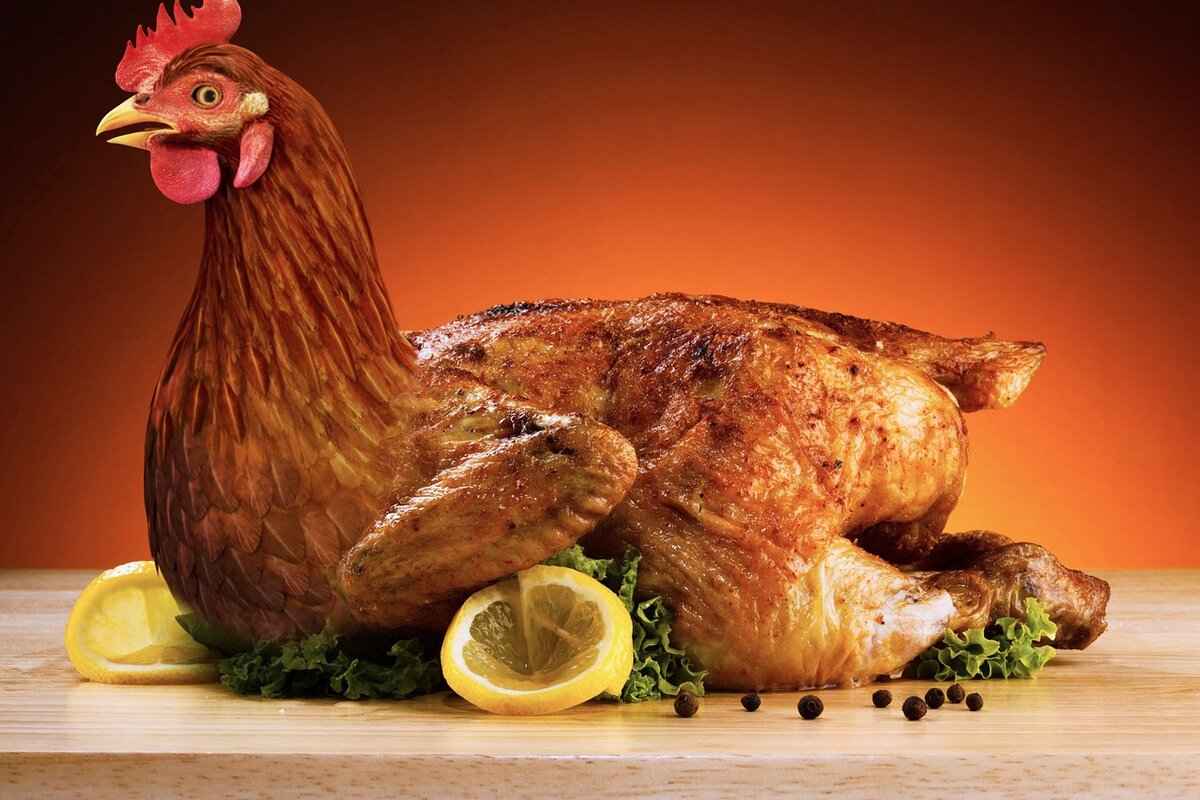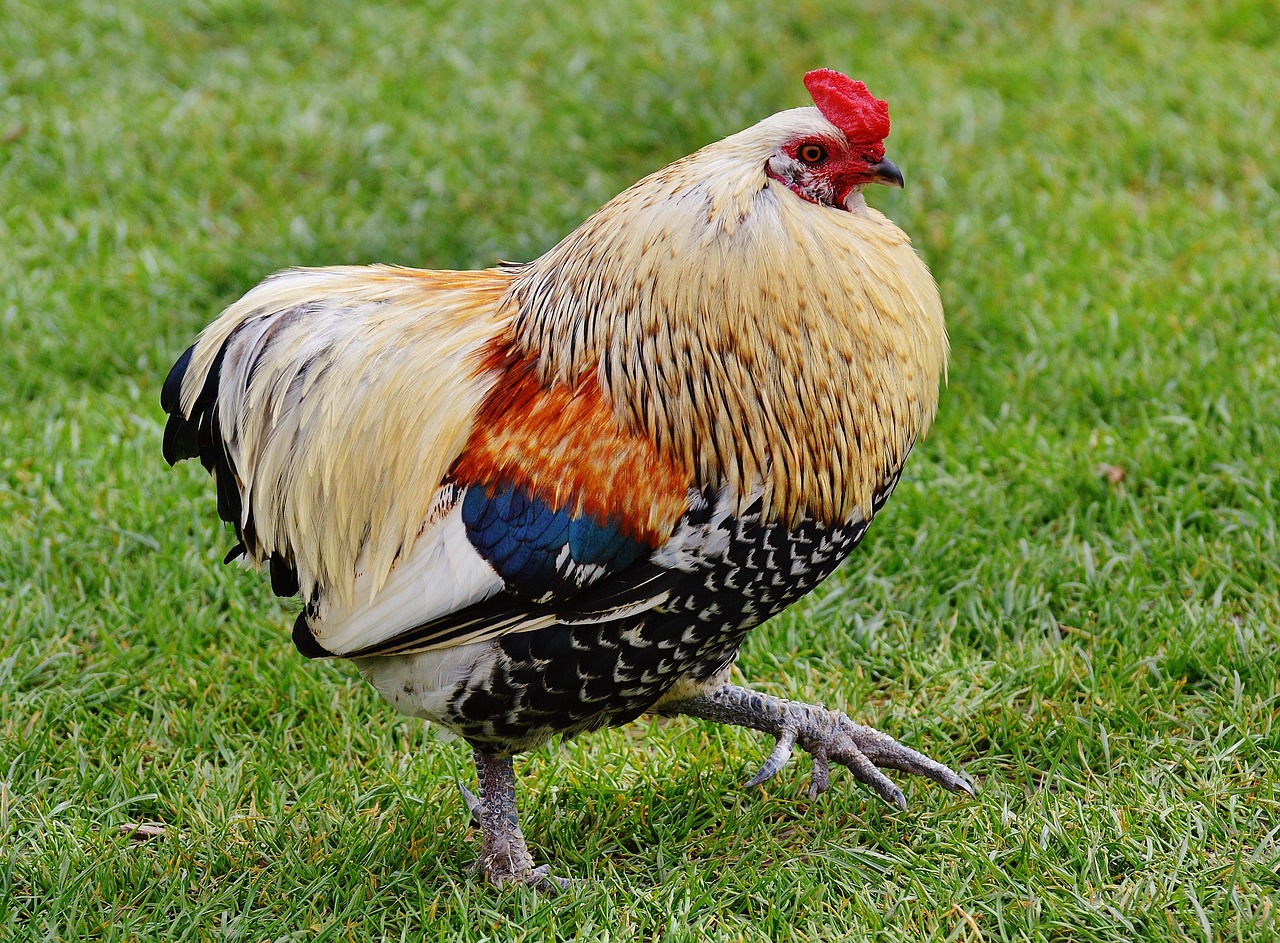Asian-inspired fried chicken is a culinary adventure that brings together an array of flavors and techniques from various Asian cultures. From the spicy and sweet notes of Korean fried chicken to the aromatic and herbaceous essence of Thai fried chicken, this dish has gained immense popularity worldwide. With its crispy exterior and juicy interior, Asian fried chicken is more than just a meal; it’s an experience that tantalizes the taste buds.
Asian fried chicken is distinct due to its unique marinades, coatings, and cooking methods. Unlike traditional fried chicken, which often relies on a simple breading, Asian variations showcase a fusion of spices and ingredients that elevate the dish. The use of fermented sauces, spicy pastes, and aromatic herbs creates layers of flavor that are both bold and complex.
Korean fried chicken is famous for its super crispy texture and flavorful sauces. To achieve that perfect crunch, follow these steps:
- Essential Ingredients: The key to authentic Korean fried chicken lies in ingredients like gochujang (Korean chili paste), garlic, and a light batter that ensures maximum crispiness.
- Choosing the Right Chicken Cuts: For the best results, opt for bone-in pieces such as wings or thighs, which retain moisture and flavor during frying.
- Marinating Techniques: Marinate your chicken in a blend of soy sauce, rice wine, and spices to enhance its taste and tenderness.
- Frying Methods: Double-frying is recommended to achieve a light, crispy exterior while keeping the meat juicy inside.
Thai fried chicken introduces a unique twist with its aromatic spices and herbs. Unlike Korean fried chicken, which focuses on heat and sweetness, Thai fried chicken offers a fragrant and savory profile.
- Signature Spices: Ingredients like lemongrass, kaffir lime leaves, and fish sauce are often used, creating a dish that tantalizes the palate.
- Cooking Techniques: Deep-frying combined with marinating in coconut milk adds richness and depth, making it a favorite among food lovers.
Serving suggestions can elevate the dining experience. Consider pairing your fried chicken with traditional sides or innovative combinations:
- Traditional Accompaniments: For Korean dishes, pair with kimchi; for Thai variations, a refreshing papaya salad enhances the overall flavor.
- Creative Serving Ideas: Serve your Asian fried chicken in tacos or as part of a fusion platter, blending various cuisines for a unique culinary experience.
For those seeking lighter options, there are healthier methods to enjoy Asian-inspired fried chicken without sacrificing flavor:
- Oven-Baked Variations: Oven-baking your chicken with a crispy coating can significantly reduce fat content while still delivering that satisfying crunch.
- Air Fryer Techniques: Using an air fryer allows you to achieve a similar crispiness to traditional frying but with much less oil, making it a healthier choice.
In conclusion, the world of Asian-inspired fried chicken is as diverse as it is delicious. From the bold flavors of Korean fried chicken to the aromatic spices of Thai variations, there is something for everyone to enjoy. Whether you prefer the classic frying methods or opt for healthier alternatives, the delightful crunch and rich flavors of Asian fried chicken are sure to satisfy any craving.

What Makes Asian Fried Chicken Unique?
Asian fried chicken is a culinary delight that captivates food lovers around the world. With its distinctive marinades, crispy coatings, and unique cooking methods, this dish reflects a rich tapestry of flavors and techniques from various cultures. The fusion of spices not only enhances the taste but also showcases the diverse culinary heritage of Asia.
Asian fried chicken stands out due to its bold flavors and creative preparations. Unlike traditional fried chicken, which often relies on simple seasoning, Asian versions incorporate a variety of spices and herbs that elevate the dish to new heights. For instance, Korean fried chicken is famous for its double-frying method, resulting in an incredibly crispy texture that is then coated in a spicy and sweet sauce. This technique is a testament to the culinary ingenuity found across Asian cuisines.
Moreover, the marinades used in Asian fried chicken are often complex and flavorful. Ingredients such as soy sauce, ginger, and garlic are common, creating a savory base that permeates the meat. In contrast, Thai fried chicken may feature lemongrass and coconut milk, offering a fresh and aromatic twist. This diversity in flavor profiles ensures that each region’s fried chicken is unique and reflective of its local ingredients.
Marinades play a crucial role in the preparation of Asian fried chicken. By allowing the chicken to soak in a mixture of seasonings and liquids, the meat becomes tender and infused with flavor. For example, a traditional Korean marinade might include gochujang (Korean chili paste), which adds a spicy kick, while a Thai marinade might incorporate fish sauce for a savory depth. These ingredients not only enhance the taste but also contribute to the overall aroma of the dish.
Cooking techniques also differentiate Asian fried chicken from its Western counterparts. The method of double frying is particularly popular in Korean cuisine. This process involves frying the chicken twice at different temperatures, resulting in a light and crispy exterior while keeping the meat juicy. In contrast, Thai fried chicken often employs the use of coconut milk in the marinade, which adds richness and a unique flavor that is characteristic of Thai cuisine.
Across Asia, fried chicken variations are abundant, each with its own unique twist. In Japan, karaage refers to marinated chicken pieces that are coated in potato starch and fried until golden brown. This method results in a crunchy texture, often served with a squeeze of lemon. In the Philippines, chicken adobo offers a different approach, where chicken is braised in vinegar and soy sauce before being fried, creating a savory and tangy flavor profile.
Serving suggestions for Asian fried chicken can elevate the overall dining experience. Traditional accompaniments such as kimchi or papaya salad enhance the flavors and provide a refreshing contrast to the rich and crispy chicken. Additionally, consider innovative serving ideas, such as using fried chicken in tacos or as part of a fusion platter, allowing for a creative culinary experience that blends various cuisines.
For those looking to enjoy Asian-inspired fried chicken with a healthier twist, there are several alternatives. Oven-baking offers a way to achieve a crispy texture with significantly less oil. Another option is using an air fryer, which can replicate the crunchiness of traditional frying while reducing fat content. These methods allow individuals to savor the flavors of Asian fried chicken without compromising their health.

How to Prepare Korean Fried Chicken?
Korean fried chicken has gained immense popularity around the world, celebrated for its crispy texture and flavorful sauces. This dish is not just about frying chicken; it’s about mastering the art of achieving that signature crunch and taste that leaves a lasting impression. In this guide, we will walk you through the essential steps to prepare mouth-watering Korean fried chicken.
The key to authentic Korean fried chicken lies in its ingredients. Here are the essentials:
- Chicken: Use bone-in pieces like wings or thighs for juiciness.
- Marinade: A mixture of soy sauce, rice wine, and spices adds depth of flavor.
- Batter: A light batter made with cornstarch or potato starch ensures maximum crispiness.
- Gochujang: This Korean chili paste brings heat and umami to the dish.
- Garlic: Freshly minced garlic enhances the overall flavor profile.
For the best results, opt for bone-in chicken pieces. Cuts like wings or thighs are ideal as they retain moisture and flavor during the frying process, resulting in a tender and juicy interior.
To achieve an unforgettable taste, marinate your chicken for at least 1-2 hours, or even overnight if possible. A simple marinade can include:
- 1/4 cup soy sauce
- 2 tablespoons rice wine
- 2 cloves minced garlic
- 1 tablespoon ginger paste
- 1 tablespoon sugar
This combination not only enhances flavor but also tenderizes the meat, setting a solid foundation for your fried chicken.
To achieve that ultimate crunch, the double-frying technique is highly recommended. Here’s how to do it:
1. Heat oil in a deep fryer or large pot to 350°F (175°C).2. Fry the marinated chicken in batches for about 6-8 minutes until golden brown.3. Remove and let it rest for a few minutes.4. Increase the oil temperature to 375°F (190°C).5. Fry the chicken again for an additional 2-4 minutes until extra crispy.
This method ensures a light, crispy exterior while keeping the meat juicy and flavorful inside.
After frying, you can choose to coat your chicken in a variety of sauces. Some popular options include:
- Korean BBQ Sauce: A sweet and savory sauce made with gochujang, honey, and sesame oil.
- Spicy Garlic Sauce: A fiery blend of garlic, chili flakes, and soy sauce.
- Sweet Soy Sauce: A mixture of soy sauce, sugar, and sesame seeds for a delightful glaze.
Coating your fried chicken in these sauces can elevate its flavor profile, making it even more irresistible.
To enhance the dining experience, serve your Korean fried chicken with traditional sides such as:
- Kimchi: A spicy fermented vegetable side that complements the richness of the chicken.
- Pickled Radish: A refreshing palate cleanser that balances the flavors.
- Rice: Steamed white rice is a classic accompaniment.
These sides not only enhance the meal but also provide a well-rounded culinary experience.
Essential Ingredients for Korean Fried Chicken
Korean fried chicken has gained immense popularity worldwide, and its distinct flavor and texture make it a favorite among food lovers. The secret to achieving this crispy delight lies in the carefully selected ingredients that contribute to its unique taste and mouthfeel. In this section, we will explore the essential ingredients that form the foundation of authentic Korean fried chicken.
- Gochujang: This fermented Korean chili paste is a staple in Korean cuisine, providing a sweet, spicy, and umami flavor that elevates the dish. Its rich depth enhances the overall taste profile of the chicken, making it a must-have ingredient.
- Garlic: Freshly minced garlic adds a robust flavor that complements the heat of gochujang. It infuses the chicken with aromatic notes, making each bite a savory experience.
- Light Batter: The batter used for coating the chicken is crucial for achieving that signature crispiness. A combination of cornstarch and flour is often preferred, as it creates a light, airy texture that fries up beautifully.
- Rice Vinegar: Adding a splash of rice vinegar to the marinade not only tenderizes the chicken but also balances the flavors, providing a hint of acidity that cuts through the richness.
- Sesame Oil: This fragrant oil is used sparingly in the marinade, imparting a distinctive nutty flavor that enhances the overall taste of the fried chicken.
- Green Onions: Chopped green onions are often sprinkled on top of the finished dish for a fresh, vibrant touch. They add a mild onion flavor that complements the richness of the fried chicken.
When preparing Korean fried chicken, it’s essential to use high-quality ingredients. The combination of these elements not only contributes to the flavor but also ensures a delightful texture that keeps diners coming back for more.
In addition to the primary ingredients, the marinating process plays a vital role in flavor development. Allowing the chicken to soak in the marinade for several hours, or even overnight, enables the flavors to penetrate deeply, resulting in a more flavorful and tender final product.
Furthermore, the cooking technique is equally important. Double frying is a popular method used in Korean kitchens. The first fry cooks the chicken through, while the second fry crisps up the exterior to perfection. This technique is what sets Korean fried chicken apart from its counterparts, creating a crunchy shell that encases juicy, tender meat.
In conclusion, the essential ingredients for Korean fried chicken work together to create a dish that is not only delicious but also a true representation of Korean culinary traditions. By understanding these components and their roles, you can replicate this beloved dish in your own kitchen, bringing a taste of Korea to your dining table.
Choosing the Right Chicken Cuts
When it comes to preparing Asian-inspired fried chicken, the choice of chicken cuts plays a crucial role in achieving the best flavor and texture. Selecting the right cuts can significantly enhance the overall dining experience, making your dish not only more delicious but also more visually appealing.
For the best results, it is highly recommended to use bone-in chicken pieces, such as wings or thighs. These cuts are known for their ability to retain moisture and flavor during the frying process. Unlike boneless options, bone-in cuts provide a richer taste and a juicier texture, ensuring that each bite is packed with flavor.
- Wings: Chicken wings are a popular choice for fried chicken dishes, especially in Asian cuisine. Their small size allows for quick cooking, and the skin crisps up beautifully, making them a favorite for many.
- Thighs: Chicken thighs are another excellent option, known for their tenderness and flavor. The extra fat in thighs helps to keep the meat juicy, even when fried at high temperatures.
- Drumsticks: Drumsticks are also a great choice for those who enjoy a hearty piece of chicken. They are easy to handle and provide a satisfying crunch when fried.
Using these bone-in cuts not only enhances the flavor profile of your fried chicken but also adds an element of authenticity to the dish. The bones help conduct heat during cooking, ensuring that the meat cooks evenly and remains moist. This is particularly important in Asian fried chicken recipes, where achieving the perfect balance of crispiness and juiciness is key.
In addition to the choice of cuts, the marinating process is equally vital. Marinating your chicken in flavorful mixtures, such as soy sauce, ginger, and garlic, allows the meat to absorb essential flavors, further enhancing its taste. The marination process also helps to tenderize the chicken, making it even more succulent after frying.
Another aspect to consider is the cooking method. While frying is the traditional approach, alternative methods such as baking or air frying can also yield delicious results while maintaining the integrity of the chicken cuts. These methods can be particularly appealing for those looking to reduce oil consumption without sacrificing flavor.
Ultimately, the choice of chicken cuts is paramount in creating a memorable Asian-inspired fried chicken dish. By opting for bone-in pieces like wings, thighs, or drumsticks, you ensure that your meal is not only flavorful but also satisfying. Coupled with the right marinades and cooking techniques, you can achieve a delightful balance of textures and tastes that will impress your family and friends.
Marinating Techniques for Maximum Flavor
When it comes to creating a mouthwatering dish, the marination process plays a pivotal role, especially in Asian-inspired fried chicken recipes. By soaking the chicken in a carefully crafted marinade, you not only enhance its taste but also improve its tenderness. This foundational step is crucial for achieving a truly delicious dish.
The essence of a great marinade often lies in the balance of flavors. A typical Asian marinade combines ingredients such as soy sauce, rice wine, and a variety of spices. These elements work together to infuse the chicken with rich flavors that penetrate deeply into the meat. Additionally, the saltiness from the soy sauce helps to break down the proteins in the chicken, leading to a more tender result.
To create a well-rounded marinade, consider incorporating the following components:
- Base: Start with a liquid base like soy sauce or fish sauce, which adds depth and umami.
- Acid: Add rice wine or vinegar to balance the flavors and tenderize the meat.
- Sweetness: Incorporate honey or brown sugar to create a sweet contrast, enhancing the overall flavor profile.
- Spices and Aromatics: Use garlic, ginger, and chili to add layers of flavor and complexity.
For optimal results, marinate the chicken for at least 30 minutes, though longer marination times, such as 2 to 24 hours, can yield even better results. This extended time allows the flavors to fully penetrate the meat, ensuring that every bite is bursting with taste.
Another effective technique is to use a ziplock bag for marinating. This method not only saves space in the refrigerator but also allows the marinade to coat the chicken evenly. Simply place the chicken and marinade in the bag, seal it, and massage the chicken to ensure an even distribution of the marinade. This technique is particularly useful for larger cuts of chicken, such as thighs or drumsticks.
After marinating, it’s essential to properly prepare the chicken for frying. Remove it from the marinade and allow any excess liquid to drip off. This step is crucial because too much marinade can lead to a soggy coating when frying. For an extra layer of flavor and crunch, consider dusting the marinated chicken with a light coating of flour or cornstarch before frying.
In summary, mastering the art of marinating is key to achieving flavorful and tender Asian-inspired fried chicken. By using a mix of soy sauce, rice wine, and a variety of spices, you can create a marinade that enhances the chicken’s natural flavors. Remember to allow ample time for marination and use techniques that ensure even coverage for the best results. With these tips, you’ll be well on your way to creating a delectable dish that will impress your guests and satisfy your cravings.
Frying Methods for Perfect Crispiness
Achieving the perfect crunch in fried chicken is an art that combines technique, timing, and temperature. One of the most effective methods to ensure a light, crispy exterior while keeping the meat juicy inside is through double-frying. This technique is not only popular in Asian cuisine but has also gained traction worldwide for its ability to elevate the texture of fried foods.
When you double-fry chicken, the process involves frying the meat twice at different temperatures. The first fry cooks the chicken through while creating a delicate crust. After a brief resting period, the chicken is fried a second time at a higher temperature. This second fry is crucial as it enhances the crispiness, giving the chicken that satisfying crunch that everyone loves.
Here’s a more detailed breakdown of the double-frying process:
- First Fry: Heat your oil to around 325°F (160°C). This lower temperature allows the chicken to cook evenly without burning the exterior. Fry the chicken pieces for about 10-12 minutes, depending on their size, until they are golden brown and cooked through.
- Resting Period: After the first fry, remove the chicken and let it rest on a wire rack for about 5-10 minutes. This step is essential as it allows excess oil to drip off and helps the crust to set.
- Second Fry: Increase the oil temperature to 375°F (190°C) and fry the chicken again for an additional 3-5 minutes. This high heat will create a wonderfully crispy texture while sealing in the juices.
Aside from double-frying, there are other techniques to enhance the crispiness of your fried chicken:
- Use of Cornstarch or Rice Flour: Incorporating cornstarch or rice flour into your batter can significantly improve the crunchiness. These ingredients absorb moisture and create a lighter coating.
- Resting Before Frying: Allowing the coated chicken to rest for 30 minutes before frying helps the batter adhere better, resulting in a more uniform and crispy crust.
- Temperature Control: Maintaining the right oil temperature is critical. If the oil is too cool, the chicken will absorb more oil and become greasy. Conversely, if it’s too hot, the coating may burn before the chicken is fully cooked.
Moreover, the choice of oil can also impact the crispiness of your fried chicken. Oils with high smoke points, such as peanut or canola oil, are ideal as they can withstand the high temperatures needed for frying without breaking down.
In conclusion, mastering the frying methods for perfect crispiness is key to creating delicious fried chicken that is both juicy on the inside and crunchy on the outside. By utilizing techniques such as double-frying, selecting the right ingredients, and controlling your frying environment, you can elevate your fried chicken to restaurant-quality standards right in your kitchen.

What Are the Key Differences in Thai Fried Chicken?
Thai fried chicken is a culinary delight that sets itself apart from other fried chicken varieties, particularly its Korean counterpart. While both dishes share a common love for crispy textures, the flavor profiles and cooking techniques diverge significantly, making each a unique experience for food lovers.
At the heart of Thai fried chicken lies a blend of aromatic spices and fresh herbs that create a flavor explosion unlike any other. This dish is often marinated with ingredients that are quintessential to Thai cuisine, such as lemongrass, kaffir lime leaves, and fish sauce, which infuse the chicken with a fragrant and savory essence. These ingredients not only enhance the taste but also add a refreshing quality that contrasts with the richness of the fried chicken.
One of the most notable aspects of Thai fried chicken is its use of unique spices that are less commonly found in Korean recipes. The incorporation of coriander, turmeric, and Thai basil elevates the dish, providing a vibrant color and an aromatic profile that is both enticing and satisfying. These spices work harmoniously to create layers of flavor that dance on the palate, making each bite a delightful experience.
Thai fried chicken often employs a combination of deep-frying and marinating techniques that contribute to its distinctive taste and texture. Marinating the chicken in coconut milk not only adds richness but also tenderizes the meat, resulting in a juicy interior that contrasts beautifully with the crispy exterior. This method is a hallmark of Thai cooking, where balancing flavors and textures is paramount.
- Deep-Frying: The traditional method of deep-frying ensures that the chicken achieves a golden-brown crust, locking in moisture and flavor.
- Marination: Using coconut milk and spices for marination allows the flavors to penetrate the chicken, enhancing its overall taste.
When it comes to serving Thai fried chicken, the options are as diverse as the flavors themselves. A popular choice is to pair the chicken with a spicy dipping sauce, which often includes ingredients like chili, lime juice, and garlic. This adds an extra layer of flavor and complements the savory notes of the chicken.
To truly enjoy Thai fried chicken, consider serving it alongside traditional Thai sides. A papaya salad (Som Tum) is a refreshing option that balances the richness of the fried chicken, while jasmine rice provides a neutral base that allows the flavors of the chicken to shine. Additionally, a side of coconut rice can enhance the overall experience with its subtle sweetness.
For those looking to enjoy the flavors of Thai fried chicken in a healthier manner, there are several alternatives. Baking or air-frying the chicken can significantly reduce the amount of oil used while still achieving a satisfying crunch. These methods allow you to savor the delicious spices and herbs without the added calories from frying.
- Baking: Oven-baking with a light coating can provide a crispy texture while reducing fat content.
- Air Frying: Utilizing an air fryer can mimic the frying process, resulting in a crispy exterior with less oil.
In summary, Thai fried chicken offers a unique culinary experience that is rich in flavor and texture, setting it apart from other fried chicken varieties. With its aromatic spices, innovative cooking techniques, and delightful serving suggestions, it is a dish that continues to captivate food enthusiasts around the world.
Signature Spices in Thai Fried Chicken
Thai fried chicken is a delightful dish that captivates the senses with its vibrant flavors and aromatic spices. What sets this dish apart from other fried chicken varieties is its unique blend of ingredients that reflect the rich culinary heritage of Thailand. In this article, we will explore the signature spices that make Thai fried chicken a must-try for food enthusiasts.
The essence of Thai fried chicken lies in its aromatic ingredients. Here are some of the key components:
- Lemongrass: This herb adds a refreshing citrus flavor that is characteristic of Thai cuisine. It is often bruised or chopped to release its essential oils, infusing the chicken with a zesty aroma.
- Kaffir Lime Leaves: Known for their unique fragrance, these leaves enhance the dish with a distinct lime flavor. They can be used whole or finely chopped, adding depth to the marinade.
- Fish Sauce: A staple in Thai cooking, fish sauce contributes a savory umami taste. It is typically used in the marinade, providing a salty kick that elevates the overall flavor profile.
- Garlic: Fresh garlic is a common ingredient that brings pungency and warmth to the dish. It is often minced and mixed with other spices to create a flavorful marinade.
- Turmeric: This vibrant yellow spice not only imparts a beautiful color to the chicken but also adds a mild earthy flavor. It is commonly used in marinades for Thai fried chicken.
The combination of these ingredients creates a fragrant and savory dish that tantalizes the palate. The citrus notes from lemongrass and kaffir lime leaves brighten the flavor, while fish sauce provides depth and complexity. Garlic and turmeric round out the profile, ensuring that each bite is bursting with flavor.
To achieve the best results, marinating the chicken is essential. Here’s a simple method:
1. Combine minced garlic, chopped lemongrass, kaffir lime leaves, fish sauce, and turmeric in a bowl.2. Add the chicken pieces and ensure they are well-coated with the marinade.3. Let the chicken marinate for at least 2 hours, preferably overnight, to allow the flavors to penetrate the meat.
Once marinated, the chicken can be fried to perfection. The frying technique plays a crucial role in achieving that coveted crispy texture while retaining the juicy interior. Here are some tips:
- Double Frying: This method involves frying the chicken twice to achieve maximum crispiness. The first fry cooks the chicken through, while the second fry adds a crunchy exterior.
- Temperature Control: Maintaining the oil temperature is vital. Too low, and the chicken absorbs excess oil; too high, and it burns before cooking through.
Thai fried chicken can be served in various ways, enhancing its appeal:
- With Sticky Rice: A traditional accompaniment, sticky rice complements the flavors and provides a satisfying texture.
- With Spicy Dipping Sauce: A tangy chili sauce or a sweet and sour dip can elevate the dish even further, adding layers of flavor.
In summary, Thai fried chicken is a celebration of unique spices and cooking techniques that create an unforgettable dining experience. The harmonious blend of lemongrass, kaffir lime leaves, fish sauce, garlic, and turmeric results in a dish that is not only flavorful but also deeply satisfying. Whether enjoyed as a main course or a snack, this dish is sure to leave a lasting impression.
Cooking Techniques for Thai Fried Chicken
Thai fried chicken is a culinary delight that showcases the rich and vibrant flavors of Thailand. One of the most remarkable aspects of this dish is the cooking techniques that elevate it to a level of deliciousness that is hard to resist. This article explores the intricate methods that make Thai fried chicken a favorite among food enthusiasts.
The use of coconut milk in the marinating process is a game-changer. It not only tenderizes the chicken but also infuses it with a creamy richness that enhances the overall flavor profile. The natural sweetness of coconut milk balances the savory spices, creating a harmonious blend that tantalizes the taste buds.
Deep-frying is the traditional method used for cooking Thai fried chicken. This technique ensures that the chicken develops a crispy exterior while remaining juicy on the inside. The high temperature of the oil seals in moisture, preventing the chicken from drying out during the cooking process.
Thai fried chicken is renowned for its distinctive spice blends. Commonly used ingredients include:
- Lemongrass – adds a citrusy aroma
- Kaffir lime leaves – provide a unique zest
- Fish sauce – enhances umami flavors
- Chili paste – adds a kick of heat
These spices create a fragrant and savory dish that is both aromatic and flavorful, making each bite a delightful experience.
For those looking to intensify the flavor, a double marination technique can be employed. Initially, the chicken is marinated in coconut milk and spices, then coated in a seasoned flour mixture before being marinated again. This process not only enriches the flavor but also ensures a crispy coating that adheres well during frying.
Thai fried chicken is best served hot and can be accompanied by a variety of sides. Traditional pairings include:
- Sticky rice – complements the dish’s richness
- Spicy dipping sauces – enhance the flavor experience
- Fresh herbs – such as cilantro or mint for garnish
These accompaniments not only elevate the dish but also provide a refreshing contrast to the fried chicken’s savory flavors.
While deep-frying is the classic method, there are healthier alternatives that still yield delicious results. Consider using an air fryer or oven-baking your marinated chicken. These methods significantly reduce the amount of oil used, making it a lighter option without compromising on taste.
In conclusion, the cooking techniques for Thai fried chicken are a beautiful blend of tradition and flavor. By marinating in coconut milk, utilizing deep-frying, and incorporating aromatic spices, this dish stands out in the world of fried chicken. Whether enjoyed at a street food stall in Thailand or made at home, Thai fried chicken promises a delightful culinary experience that is sure to please.

How to Serve Asian Fried Chicken?
Asian fried chicken is not just a dish; it’s an experience that can be enhanced through thoughtful serving suggestions. The right accompaniments can elevate the flavors of the chicken, making each bite a delightful fusion of tastes and textures. Here, we explore various ways to serve Asian fried chicken that cater to both traditional and modern palates.
When it comes to pairing, the options are vast. Here are some traditional and innovative side dishes that complement the bold flavors of Asian fried chicken:
- Kimchi: This fermented Korean side dish adds a spicy and tangy kick that balances the richness of fried chicken.
- Steamed Rice: A simple bowl of jasmine or sticky rice serves as a neutral base that allows the chicken’s flavors to shine.
- Coleslaw: A crunchy slaw with a sesame dressing can provide a refreshing contrast to the crispy chicken.
- Pickled Vegetables: Bright and tangy pickled radishes or cucumbers can cleanse the palate between bites.
If you’re looking to impress your guests, consider creating a fusion platter. This allows for a variety of flavors and textures, making the meal more exciting. Here’s how:
- Asian Tacos: Use small tortillas and fill them with shredded Asian fried chicken, topped with slaw and a drizzle of spicy mayo.
- Rice Paper Rolls: Wrap pieces of fried chicken with fresh herbs and vegetables in rice paper for a delightful appetizer.
- Dim Sum Style: Serve bite-sized pieces of fried chicken in small bamboo steamers alongside dipping sauces.
Dipping sauces can significantly enhance the flavor profile of your fried chicken. Here are some creative options:
- Spicy Gochujang Sauce: A blend of gochujang, honey, and sesame oil creates a sweet and spicy dip that pairs perfectly with the chicken.
- Thai Sweet Chili Sauce: This sauce adds a sweet and tangy flavor that complements the crispy texture of the chicken.
- Peanut Sauce: A rich and creamy peanut sauce can add a nutty flavor that works well with the fried chicken.
Asian fried chicken can be seamlessly integrated into various cuisines, offering a unique twist. Here are some ideas:
- Asian-Style Burgers: Use fried chicken as a patty in a burger, topped with slaw and spicy mayo.
- Fried Chicken Salad: Toss pieces of fried chicken with mixed greens, avocado, and a sesame dressing for a refreshing salad.
- Fried Chicken Sushi Rolls: Incorporate shredded fried chicken into sushi rolls with avocado and cucumber for a creative sushi experience.
By exploring these serving suggestions, you can transform your Asian fried chicken into a memorable dining experience that delights the senses. Whether you opt for traditional sides or creative pairings, the key is to enhance the dish’s bold flavors while keeping the meal balanced and enjoyable.
Traditional Accompaniments
When it comes to enjoying Asian-inspired fried chicken, the experience is often elevated by pairing it with traditional accompaniments that enhance the dish’s flavor profile. Each culture offers unique sides that not only complement the chicken but also introduce a variety of textures and tastes to the meal. Here, we explore some classic and innovative sides that can transform your fried chicken into a complete culinary adventure.
Korean fried chicken is famous for its crispy texture and flavorful sauces. To truly appreciate this dish, consider serving it with:
- Kimchi: This fermented vegetable dish, often made with napa cabbage and daikon radish, adds a spicy and tangy contrast that balances the richness of fried chicken.
- Pickled Radish: Also known as cho-danmuji, these sweet and tangy pickles offer a refreshing crunch that cuts through the savory flavors of the chicken.
- Coleslaw: A creamy coleslaw with a hint of sesame oil can provide a delightful crunch and creaminess, enhancing the overall meal.
Thai fried chicken, with its aromatic spices and herbs, pairs beautifully with:
- Papaya Salad (Som Tum): This refreshing salad made from green papaya, tomatoes, and peanuts offers a spicy and sour flavor that complements the savory notes of the chicken.
- Coconut Rice: The subtle sweetness of coconut rice provides a perfect base that balances the bold flavors of the fried chicken.
- Thai Dipping Sauce: A sweet and spicy dipping sauce made from fish sauce, lime juice, and sugar can enhance the taste experience, adding layers of flavor.
For those looking to add a creative twist to their fried chicken experience, consider these innovative serving ideas:
- Fusion Tacos: Use soft tortillas to wrap pieces of fried chicken topped with kimchi or papaya salad, creating a delightful fusion of flavors.
- Sliders: Mini sandwiches featuring fried chicken, pickled vegetables, and spicy mayo can make for a fun and interactive meal.
- Rice Bowls: Serve fried chicken over a bed of jasmine rice, topped with fresh herbs and a drizzle of sauce for a complete dish.
If you’re looking for healthier alternatives to traditional sides, consider these options:
- Quinoa Salad: A light quinoa salad with cucumbers, tomatoes, and a citrus dressing can provide a nutritious and filling accompaniment.
- Steamed Vegetables: Lightly steamed broccoli or bok choy can add a fresh element to your meal without overwhelming the palate.
- Grilled Corn: Grilled corn on the cob, seasoned with lime and chili powder, offers a sweet and smoky flavor that pairs well with fried chicken.
By thoughtfully selecting your sides, you can create a well-rounded meal that not only satisfies your cravings but also introduces a delightful array of flavors and textures. Whether you stick to traditional accompaniments or venture into innovative territory, the right pairings can make your fried chicken experience truly unforgettable.
Creative Serving Ideas
can transform your dining experience, especially when it comes to Asian-inspired fried chicken. This dish, known for its bold flavors and crispy textures, can be served in various innovative ways that not only tantalize the taste buds but also delight the eyes. Here are some unique serving suggestions that blend tradition with creativity.
- Asian Fried Chicken Tacos: Imagine the crispy, succulent pieces of Asian fried chicken tucked inside warm corn or flour tortillas. Top them with spicy kimchi, fresh cilantro, and a drizzle of sesame aioli for a delightful fusion of textures and flavors. This combination highlights the crunchiness of the chicken while adding a refreshing twist.
- Fusion Platters: Create a vibrant fusion platter by combining your Asian fried chicken with elements from other cuisines. For example, pair it with Mexican elote (grilled corn) or Indian naan. This eclectic mix not only enhances the meal’s visual appeal but also offers diners a chance to explore different flavor profiles in one sitting.
- Asian Sliders: Miniature buns filled with fried chicken, pickled vegetables, and a spicy sauce make for excellent sliders. These bite-sized delights are perfect for parties or casual gatherings, allowing guests to enjoy the essence of Asian fried chicken in a fun and shareable format.
- Rice Bowls: Serve your fried chicken over a bed of fluffy jasmine rice or quinoa, topped with steamed broccoli, carrots, and a sprinkle of sesame seeds. This wholesome approach not only balances the meal but also adds a nutritious element, making it suitable for health-conscious diners.
- Wraps and Rolls: Use rice paper or lettuce leaves to create fresh wraps filled with fried chicken, crunchy veggies, and a zesty dipping sauce. This method caters to those looking for a lighter option while still enjoying the rich flavors of Asian cuisine.
- Salad Bowls: For a refreshing twist, serve Asian fried chicken on top of a salad made with mixed greens, shredded cabbage, and a tangy ginger dressing. This combination allows the chicken’s flavor to shine while incorporating fresh ingredients that enhance the overall dish.
Incorporating these not only elevates the presentation of your Asian fried chicken but also allows for a more interactive dining experience. Whether you choose to blend cuisines or focus on traditional accompaniments, the key is to celebrate the dish’s versatility and flavor. By experimenting with different formats, you can cater to diverse palates and dietary preferences, making your meal an unforgettable culinary adventure.

What Are the Healthier Alternatives to Fried Chicken?
When it comes to enjoying the deliciousness of fried chicken, many people are concerned about the health implications. Luckily, there are healthier alternatives that allow you to indulge in Asian-inspired fried chicken without compromising your wellness goals. Let’s explore some of the best methods to achieve that satisfying crunch while keeping the calorie count in check.
For those seeking lighter options, there are several innovative cooking techniques that can help you enjoy the flavors of fried chicken without the excess fat. Here are some popular methods:
Oven-baking is a fantastic alternative to traditional frying. By using a light coating of breadcrumbs or crushed nuts, you can achieve a crispy texture without the need for deep frying. Here’s how to do it:
- Preheat your oven to 425°F (220°C).
- Marinate your chicken pieces in a mixture of soy sauce, ginger, and garlic for added flavor.
- Coat the chicken with a mixture of whole wheat breadcrumbs and spices.
- Place the chicken on a baking sheet and spray lightly with cooking oil.
- Bake for about 25-30 minutes, turning halfway through for even cooking.
This method not only reduces fat but also allows the chicken to retain its moisture, resulting in a juicy and flavorful dish.
The air fryer has taken the culinary world by storm, and for good reason. This kitchen gadget circulates hot air around the food, creating a crispy exterior similar to frying but with significantly less oil. To utilize an air fryer:
- Marinate your chicken pieces as you would for traditional fried chicken.
- Coat them lightly with a mixture of flour and spices.
- Preheat the air fryer to 400°F (200°C).
- Arrange the chicken in a single layer in the air fryer basket.
- Cook for about 20-25 minutes, flipping halfway through for optimal crispiness.
This method can cut the fat content by up to 75%, making it a healthier option without sacrificing taste.
Another excellent alternative is grilling. This method infuses your chicken with smoky flavors while allowing excess fat to drip away. To grill your chicken:
- Marinate your chicken in a blend of sesame oil, soy sauce, and spices.
- Preheat your grill to medium-high heat.
- Grill the chicken for about 6-8 minutes per side, ensuring it reaches an internal temperature of 165°F (75°C).
Grilling not only enhances the flavor but also offers a healthier cooking method that can be a fantastic addition to your meal prep.
When preparing Asian-inspired fried chicken, the coating plays a crucial role in the overall healthfulness of the dish. Instead of using traditional flour or breadcrumbs, consider alternatives like:
- Almond flour or coconut flour for a gluten-free option.
- Chickpea flour for added protein and fiber.
- Crushed cornflakes or panko breadcrumbs for a lighter crunch.
These alternatives can provide a satisfying crunch while adding nutritional benefits to your meal.
By exploring these healthier alternatives to traditional fried chicken, you can enjoy the rich flavors of Asian cuisine while maintaining a balanced diet. Whether you opt for oven-baking, air frying, grilling, or using healthier coatings, you’ll find that it’s entirely possible to indulge in your favorite dishes without the guilt.
Oven-Baked Variations
When it comes to enjoying fried chicken, many people crave that satisfying crunch without the guilt of excessive fat and calories. One of the best ways to achieve this is through oven-baking, a method that allows you to enjoy crispy chicken while significantly reducing fat content. This technique not only provides a healthier option but also retains the delicious flavors and textures that make fried chicken so appealing.
Oven-baking your chicken offers several advantages over traditional frying. First and foremost, it requires less oil, which can dramatically lower the fat content of your meal. By using a light coating of oil or even a cooking spray, you can achieve a crispy exterior without the need for deep frying. This method is particularly beneficial for those looking to maintain a healthier lifestyle while still enjoying their favorite comfort foods.
To create that perfect crispy coating when oven-baking chicken, consider the following tips:
- Use a Breading Mixture: Combine breadcrumbs, flour, and your favorite seasonings to create a flavorful breading. Adding ingredients like parmesan cheese or panko breadcrumbs can enhance the crunch factor.
- Double-Coating: For an extra layer of crunch, dip the chicken in a beaten egg, then coat it in the breadcrumb mixture, and repeat. This double-coating technique locks in moisture and creates a more substantial crust.
- High Heat: Baking at a higher temperature (around 425°F to 450°F) allows the coating to crisp up quickly while keeping the meat juicy. Make sure to preheat your oven for the best results.
To enhance the flavor of your oven-baked chicken, consider marinating it before coating. A simple marinade can include ingredients like soy sauce, garlic, and ginger. Marinating not only infuses the chicken with flavor but also helps to tenderize the meat, resulting in a juicier final product.
For optimal results, place your chicken on a wire rack set over a baking sheet. This allows air to circulate around the chicken, promoting even cooking and crispiness. Additionally, flipping the chicken halfway through the baking process ensures that both sides achieve that desired golden-brown color.
Experimenting with different flavor profiles can make your oven-baked chicken even more exciting. Here are a few ideas:
- Spicy Buffalo: Toss your baked chicken in a mixture of hot sauce and melted butter for a spicy twist.
- Asian-Inspired: Use a marinade of soy sauce, sesame oil, and five-spice powder, then coat with sesame seeds for a nutty flavor.
- Herb-Crusted: Mix fresh herbs like rosemary, thyme, and parsley into your breadcrumb mixture for a fragrant and earthy taste.
Oven-baked chicken pairs well with a variety of sides. Consider serving it with a fresh salad, roasted vegetables, or even a side of mashed potatoes. For a lighter option, a quinoa salad or steamed broccoli can complement the dish beautifully.
In summary, oven-baking your chicken not only provides a healthier alternative to traditional frying but also allows for a range of flavors and textures. By following these tips and techniques, you can enjoy delicious, crispy chicken that satisfies your cravings without the added guilt. Embrace the oven-baked method and discover a new way to enjoy this beloved dish!
Air Fryer Techniques
When it comes to enjoying fried chicken without the guilt, have revolutionized the way we cook. This modern appliance allows you to achieve that coveted crispy texture similar to traditional frying, but with significantly less oil. By utilizing hot air circulation, air fryers ensure that your chicken is not only delicious but also a healthier choice, maintaining the rich flavors we crave.
The air fryer offers a range of benefits that make it an appealing option for health-conscious individuals. Here are some key reasons:
- Reduced Oil Usage: Traditional frying often requires large amounts of oil, which can add unnecessary calories. Air frying typically uses a fraction of the oil, making it a lighter alternative.
- Lower Fat Content: By minimizing the amount of oil, air-fried chicken contains less fat, which is beneficial for those monitoring their dietary intake.
- Quick Cooking Times: Air fryers heat up rapidly, reducing cooking times compared to conventional ovens, making meal preparation more efficient.
Preparation is key to achieving the best results with air frying. Here are some essential steps:
For optimal flavor and texture, consider using bone-in pieces such as wings or thighs. These cuts retain moisture better during the cooking process, resulting in juicy meat.
Marinating your chicken is crucial for infusing flavor. A simple marinade can include:
- Soy Sauce: Adds umami and depth.
- Garlic: Offers aromatic flavor.
- Ginger: Provides a refreshing kick.
Let your chicken marinate for at least 30 minutes, or overnight for a more robust flavor.
Once your chicken is prepped, it’s time to air fry. Follow these steps to ensure perfect results:
Preheating helps achieve a crispy exterior. Set your air fryer to the desired temperature (typically around 375°F) before adding the chicken.
For that extra crunch, consider using a light coating of flour or breadcrumbs. This will enhance the texture, giving you that satisfying crunch without the excess oil.
Cooking times can vary based on the size of the chicken pieces. Generally, wings may take about 25-30 minutes, while larger thighs might require up to 40 minutes. It’s essential to check for doneness, ensuring the internal temperature reaches at least 165°F.
To maximize the benefits of air frying, keep these practices in mind:
- Avoid Overcrowding: Give your chicken enough space to allow hot air to circulate, ensuring even cooking.
- Shake or Flip: Halfway through cooking, shake the basket or flip the chicken to achieve uniform crispiness.
- Experiment with Flavors: Don’t hesitate to try different spice blends and marinades to discover your favorite flavor combinations.
Yes, you can easily reheat leftover fried chicken in an air fryer. This method helps restore its crispy texture while keeping the meat juicy. Set the air fryer to 350°F and heat for about 5-10 minutes, checking to ensure it’s warmed through.
Frequently Asked Questions
- What is the secret to crispy Asian fried chicken?
The secret lies in the double-frying technique and using a light batter. This method creates a crunchy exterior while keeping the meat juicy and tender. Don’t forget to marinate your chicken well for that extra flavor!
- Can I use different cuts of chicken for Asian fried chicken?
Absolutely! While bone-in pieces like wings and thighs are preferred for their moisture and flavor, you can use boneless cuts as well. Just remember to adjust cooking times for different cuts.
- What are some healthy alternatives to traditional fried chicken?
If you’re looking for healthier options, consider oven-baking or using an air fryer. Both methods can give you that satisfying crunch with significantly less oil, allowing you to enjoy your favorite flavors guilt-free!
- How can I enhance the flavor of my fried chicken?
Marinating your chicken in a blend of spices, soy sauce, and even coconut milk can elevate the taste. Don’t shy away from experimenting with different herbs and spices to create your unique twist!
- What are some traditional sides to serve with Asian fried chicken?
For a classic pairing, serve your fried chicken with kimchi for Korean dishes or a refreshing papaya salad for Thai variations. These sides not only complement the chicken but also enhance the overall dining experience.














